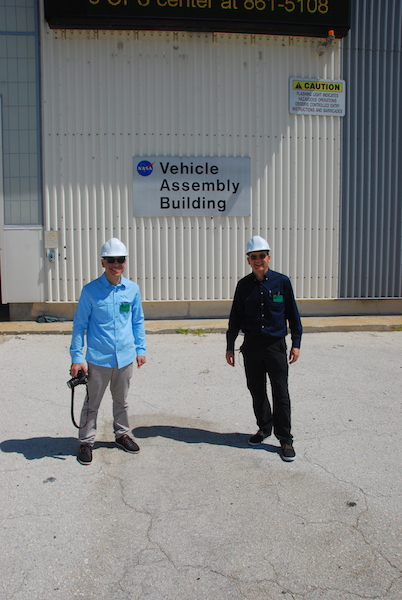
These are some of the photographs they took there.

| Michael and Peter at the side of the Vehicle Assembly Building, which dates from the 1960s. |
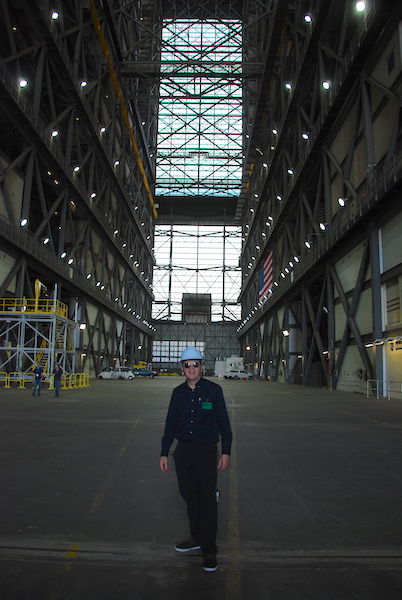
| Peter inside the Vehicle Assembly Building's central chamber, which resembles a cathedral's aisle. To the left and right, out of sight, are the four bays which used to house the 111 metre tall Saturn 5 rockets, and in future will be where the Space Launch System rockets will be assembled. Four rockets could be assembled at the same time. |
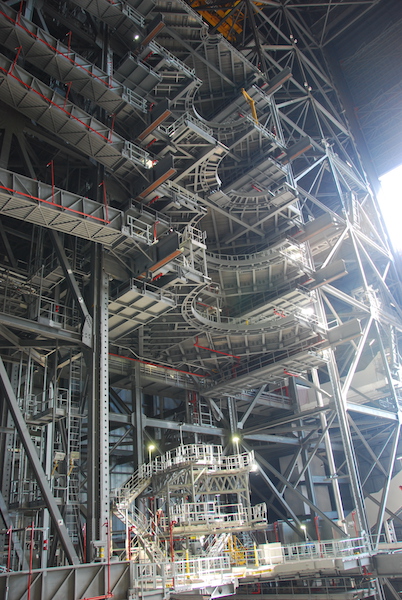
| These work platforms can be swung out to allow engineers and technicians to access the various levels of rockets being prepared for launch. |
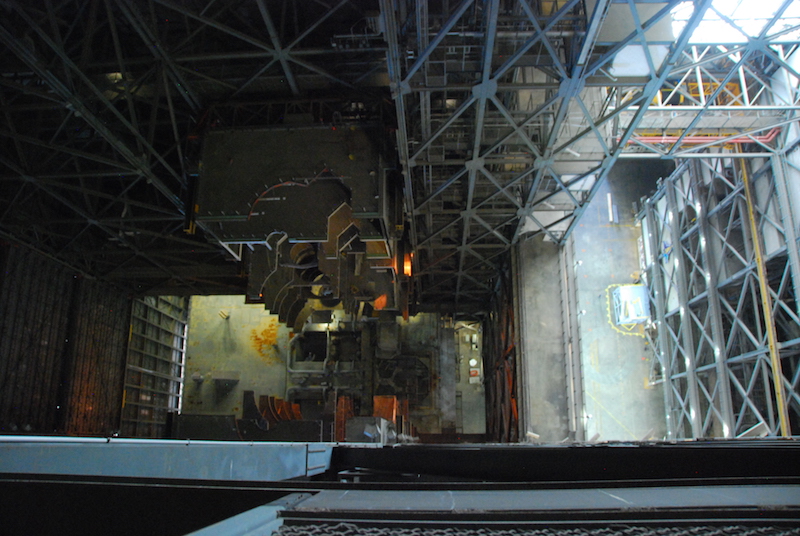
| The view down from a work platform to the floor one hundred metres below. |
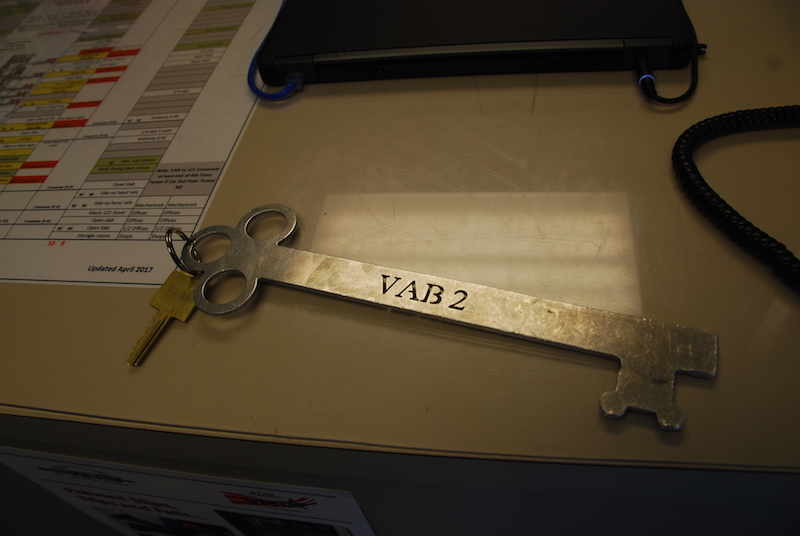
| The tagged key to the roof-top door of the Vehicle Assembly Building. Obviously, no one is going to absent mindedly go home with this key in their pocket! |
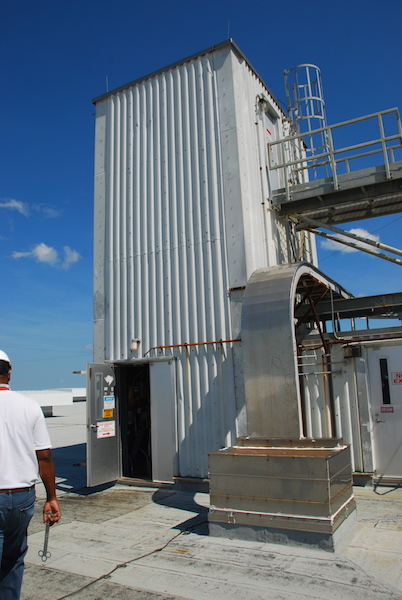
| Looking back to the door that provides access to the roof of the Vehicle Assembly Building. Note the lightning discharge cable snaking acroos the pavement towards the left. Being, at 160 metres, the tallest building for many kilometres around, the structure suffers many lightning strikes in this electrical storm-prone area of Florida. |
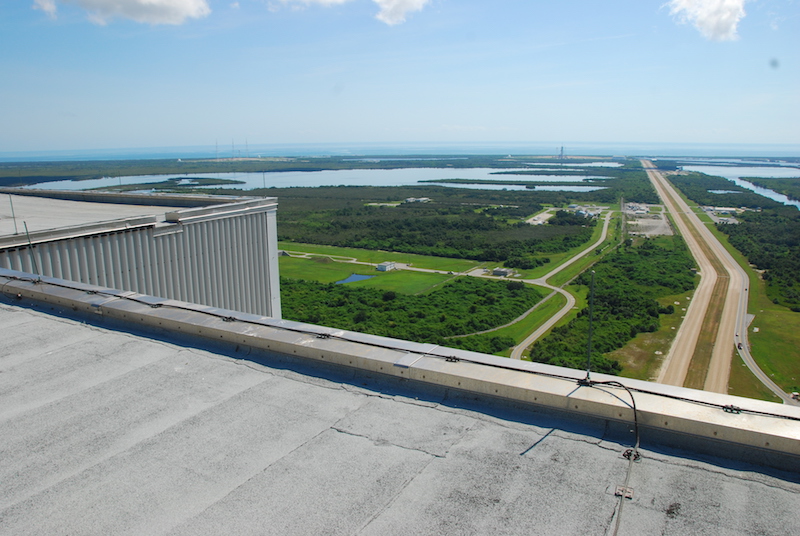
| The view from the roof of the Vehicle Assembly Building, looking towards the launch pads 39B (left) and 39A (right) from which Apollo Saturn 5 and Space Shuttles were launched. Looking like a dual carriage freeway is the crawler transporter track stretching the five kilometres to Pad 39A and branching off the the left further to Pad 39B. To its right is a two-lane road - if you look closely you can see several cars and vans driving along it.
On the horizon is the Atlantic Ocean. Notice the lightning discharge cable snaking across the roof and along the parapet. The space centre is in a wildlife refuge with prolific populations of birds, fish, alligators, and other animals and plants. |
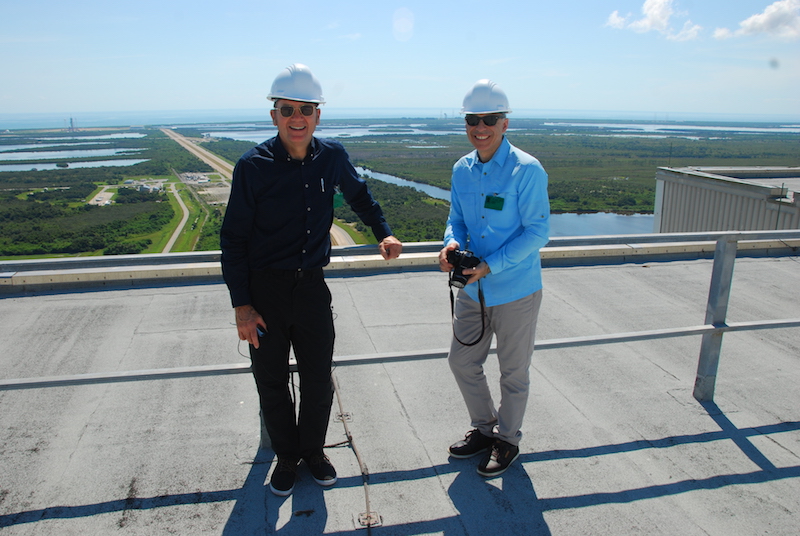
| Peter and Michael on the roof of the VAB. |
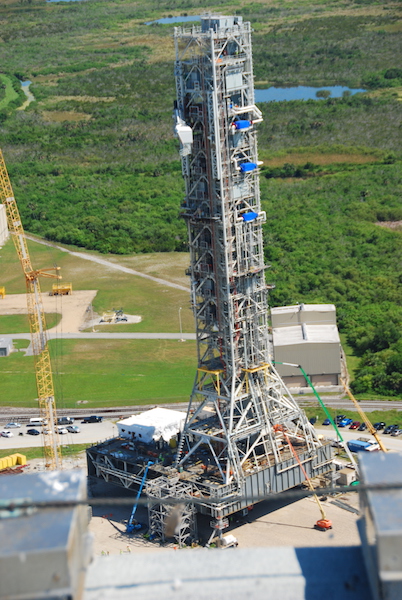
| During the Apollo programme, three mobile 7.6 metre high launch platforms were built, each surmounted by a 121.3 metre tall service structure, or Launch Umbilical Tower. For the Space Shuttle these platforms were modified, and the service structures scrapped or placed at the launch pads as Fixed Service Structures.
A new mobile launch platform and service tower was built for the cancelled Aries 1 rocket, and has since been modified for the Space Launch System rockets. It stands 122 metres tall and has a mass of 4750 tonnes. Seen from the roof of the Vehicle Assembly Building, it is surrounded by "cherry pickers" and worker's cars. A few weeks after Peter took this photo, the structure was moved to Pad 39B for testing. See Andrew's photos of this structure as it appeared in 2010. |
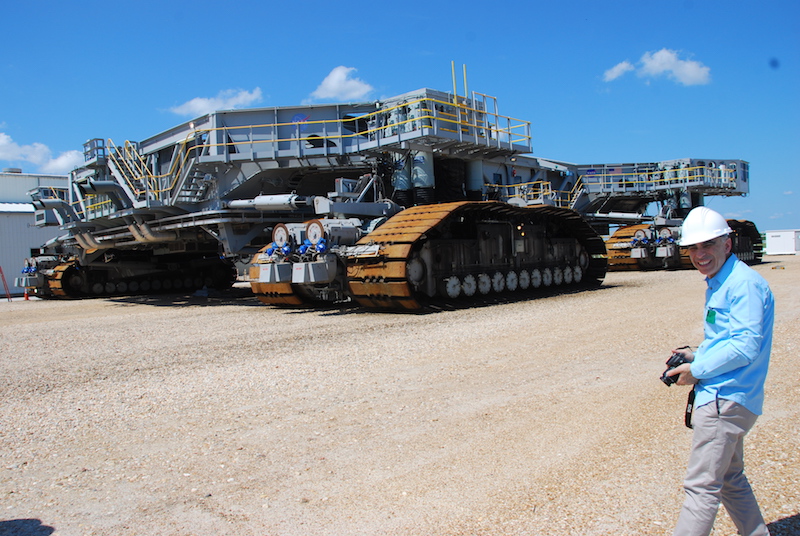
| Michael pauses from his examination of a Crawler Transporter. This is 40 metres long, 35 metres wide and 6.1 metres tall.
Its task is to crawl underneath the mobile launch platform, lift it up and carry it and the rocket out to the launch pad. Once there, it deposits the platform and rocket, and then crawls away to a safe distance. In the Apollo days the crawler had a mass of 2700 tonnes, the launch platform and unfueled Saturn 5 a mass of 5465 tonnes, for a combined mass of 8165 tonnes. After the Space Launch System rocket has been launched, the crawler returns to the pad, picks up the mobile launch platform and ferries it back to the Vehicle Assembly Building. |
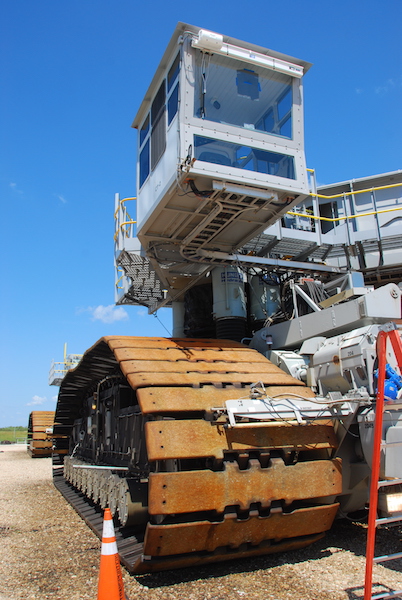
| At top of this picture is the driver's cabin of the Crawler Transporter.
Below is one of the eight caterpillar tracks, each of which are 2.1 metres wide and 12.5 metres long. Each cleat in the track has a mass of one tonne! The vehicle has a top speed of one and a half kilometres per hour, but even at that speed the driver has to be alert, especially when negotiating bends in the road! Using 350 litres of diesel fuel per kilometre, the driver had better check the fuel tanks before setting out. |
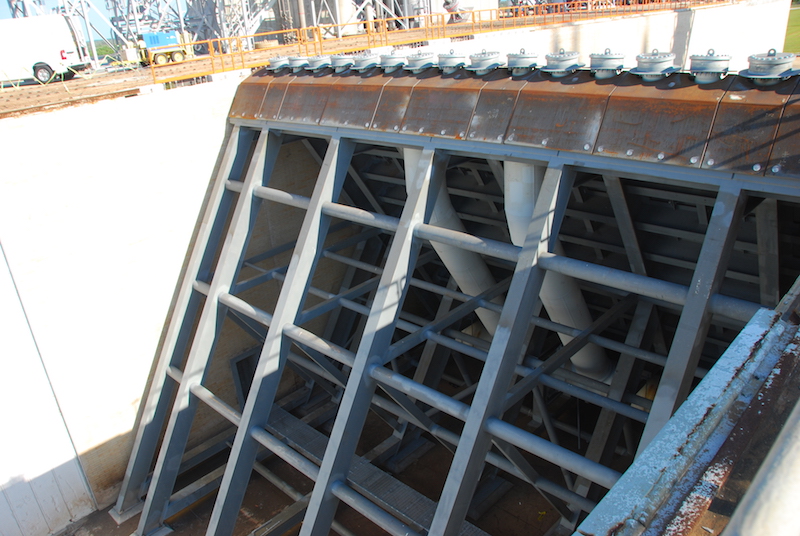
| If a large rocket like the Space Launch System just sat on the ground, when its engines are ignited it would destroy itself with shock waves reflected off the ground. To avoid that, the exhaust is deflected sideways. It is this flame deflector in the blast trench that does this at Pad 39B. |
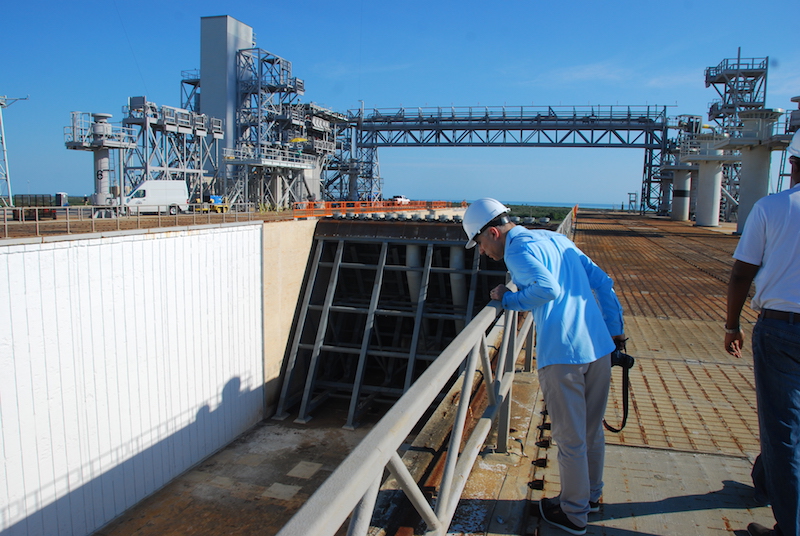
| Michael examines the blast trench at Pad 39B. |
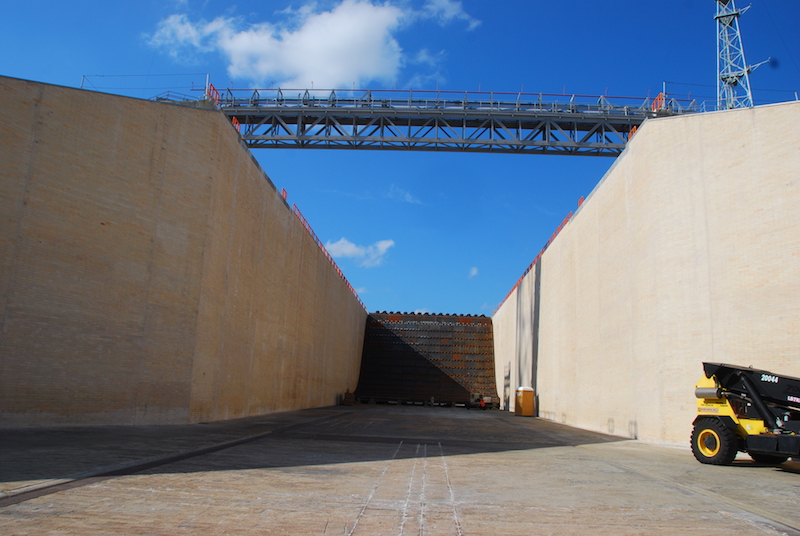
| In Pad 39B's 18 metre wide blast trench, looking towards the 13 metre high flame deflector. |
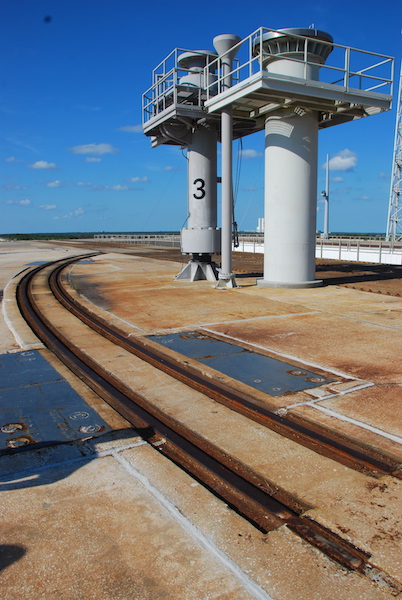
| During the Space Shuttle years, a rotating service structure surrounded the vehicle until the day before the launch. This structure moved on wheels that rolled on railway tracks. After the final Space Shuttle mission this structure was demolished, and all that remains are the tracks. See Andrew's animation of how this structure rotated. |
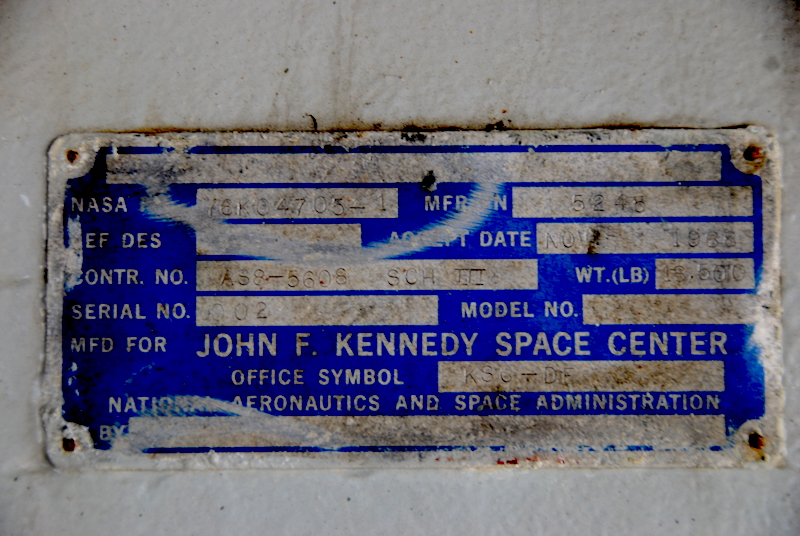
| And finally . . . . we leave you with this mystery identity plate. Can you figure what it belongs to? |